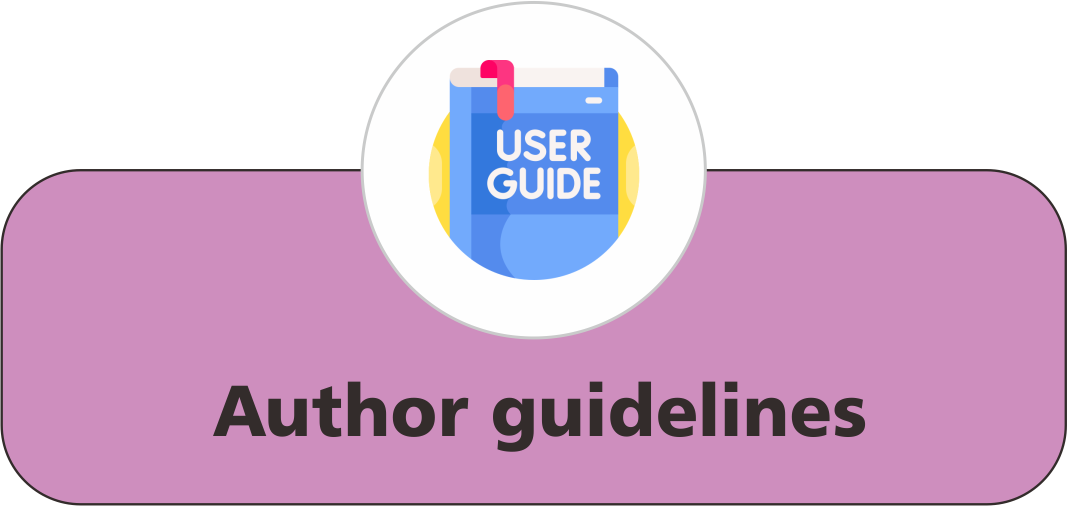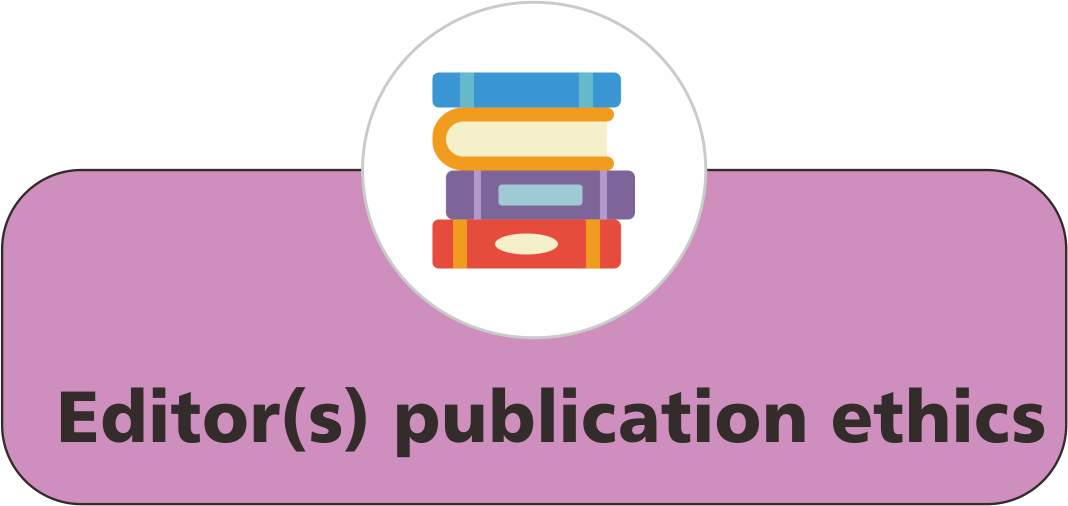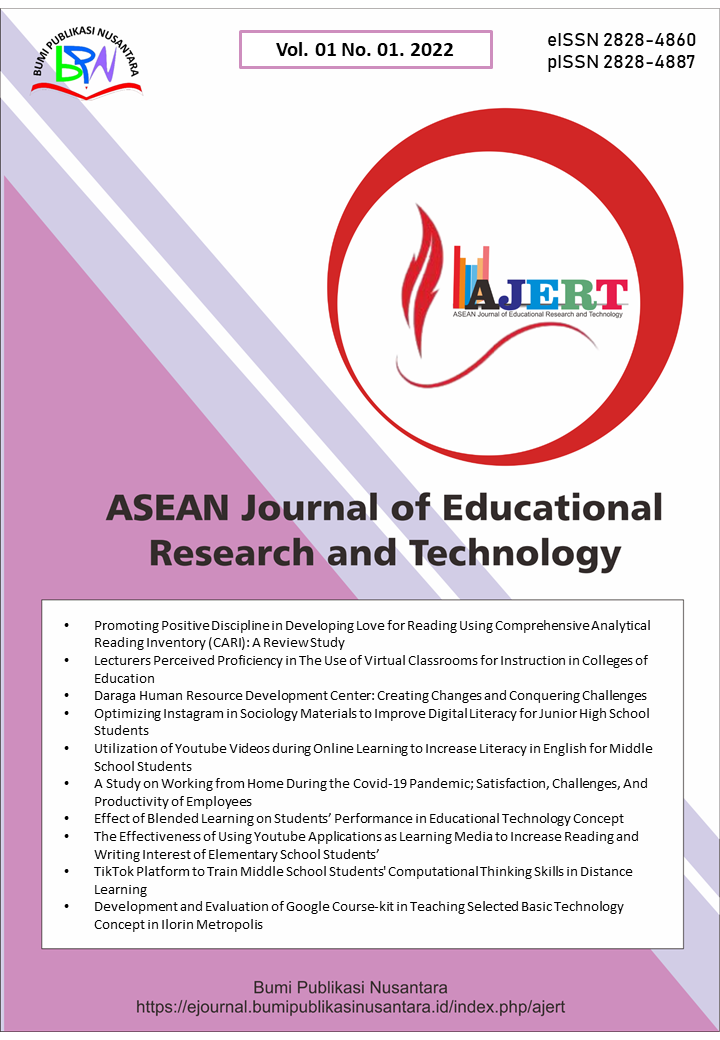Bibliometric Analysis Using VOSviewer with Publish or Perish of CEFR-based Comparison of English Language Teaching Models for Communication
 ), Montree Wongsaphan(2),
), Montree Wongsaphan(2),
(1) Mahasarakham University
(2) Mahasarakham University
 Corresponding Author
Corresponding Author
Abstract
Keywords
References
Al Husaeni, D. F., and Nandiyanto, A. B. D. (2022). Bibliometric using Vosviewer with publish or perish (using google scholar data): from step-by-step processing for users to the practical examples in the analysis of digital learning articles in pre and post covid-19 pandemic. ASEAN Journal of Science and Engineering, 2(1), 19-46.
Akkara, S., Anumula, V., and Mallampalli, M. (2020). Impact of whatsapp interaction on improving L2 speaking skills. International Journal of Emerging Technologies in Learning (IJET), 15(3), 250-259.
Al Hosni, S. (2014). Speaking difficulties encountered by young EFL learners. International Journal on Studies in English Language and Literature (IJSELL), 2(6), 22-30.
Alzoubi, Y., and Gill, A. (2021). The critical communication challenges between geographically distributed agile development teams: Empirical findings. IEEE Transactions on Professional Communication, 64(4), 322-337.
Aubrey, S., King, J., and Almukhaild, H. (2022). Language learner engagement during speaking tasks: A longitudinal study. Regional Language Centre (RELC) Journal, 53(3), 519-533.
Bailey, D., and Lee, A. R. (2020). An exploratory study of Grammarly in the language learning context: An analysis of test-based, textbook-based and Facebook corpora. TESOL International Journal, 15(2), 4-27.
Boonkit K. (2010). Enhancing the development of speaking skills for non-native speakers of English. Procedia - Social and Behavioral Sciences, 2(2):1305–1309.
Can, I., and Silman-Karanfil, L. (2022). Insights into emergency remote teaching in EFL. English Language Teaching Journal, 76(1), 34-43.
Castillo-Cuesta, L. (2020). Using digital games for enhancing EFL grammar and vocabulary in higher education. International Journal of Emerging Technologies in Learning (IJET), 15(20), 116-129.
Dizon, G., and Gayed, J. M. (2021). Examining the impact of grammarly on the quality of mobile L2 writing. Japan Association for Language Teaching Computer Assisted Language Learning (JALT CALL), 17(2), 74-92.
Hartshorn, K. J., and McMurry, B. L. (2020). The effects of the COVID-19 pandemic on ESL learners and TESOL practitioners in the United States. International Journal of TESOL Studies, 2(2), 140-156.
Huei, L. S., Yunus, M. M., & Hashim, H. (2021). Strategy to improve English vocabulary achievement during COVID-19 Epidemic. does quizizz help?. Journal of Education and E-Learning Research, 8(2), 135-142.
Jensen, L., and Konradsen, F. (2018). A review of the use of virtual reality head-mounted displays in education and training. Education and Information Technologies, 23, 1515-1529.
Jin, T., Lu, X., & Ni, J. (2020). Syntactic complexity in adapted teaching materials: Differences among grade levels and implications for benchmarking. The Modern Language Journal, 104(1), 192-208.
Kadwa, M. S., and Alshenqeeti, H. (2020). The impact of students’ proficiency in English on science courses in a foundation year program. International Journal of Linguistics, Literature and Translation, 3(11), 55-67.
Keller, S. D., Fleckenstein, J., Krüger, M., Köller, O., and Rupp, A. A. (2020). English writing skills of students in upper secondary education: Results from an empirical study in Switzerland and Germany. Journal of Second Language Writing, 48, 100700.
Kumar, T. (2020). Assessing language need and proficiency of English graduates of Prince Sattam Bin Abdulaziz University for designing pre-placement training and workshops. Asian ESP Journal, 16(4), 153-168.
Lindner, A. K., Nikolai, O., Rohardt, C., Kausch, F., Wintel, M., Gertler, M., and Mockenhaupt, F. P. (2021). Diagnostic accuracy and feasibility of patient self-testing with a SARS-CoV-2 antigen-detecting rapid test. Journal of Clinical Virology, 141, 104874.
Mackenzie, L. (2021). Discriminatory job advertisements for English language teachers in Colombia: An analysis of recruitment biases. TESOL journal, 12(1), e00535.
Mirzakhmedova, H. V., Omonov, K. S., and Khalmurzaeva, N. T. (2021). Methods of improving language skills using media software. Journal of Central Asian Social Studies, 2(03), 47-55.
Navarrete, M., and Bolaños García-Escribano, A. (2022). An Action-oriented Approach to Didactic Audio Description in Foreign Language Education. LFE. Revista de Lenguas para Fines Específicos, 28(2), 155-164.
Nguyen, V. H., and Hamid, M. O. (2021). The CEFR as a national language policy in Vietnam: Insights from a sociogenetic analysis. Journal of Multilingual and Multicultural Development, 42(7), 650-662.
Noom-ura, S. (2013). English-teaching problems in Thailand and Thai Teachers’ professional development needs. English Language Teaching, 6(11), 139-147.
Philipp, N. (2020). Impact of COVID-19 emergency transition to on-line learning onto the international students’ perceptions of educational process at Russian university. Journal of Social Studies Education Research, 11(3), 270-302.
Pongsin, V., Lawthong, N., Fry, G. W., Ransom, L., Kim, S., and Thi My, N. N. (2023). Thailand as a new international higher education hub: Major challenges and opportunities, a policy analysis. Research in Comparative and International Education, 18(2), 249-276.
Qarareh, A. O. (2012). The effect of using the learning cycle method in teaching science on the educational achievement of the sixth graders. International Journal of Educational Sciences, 4(2), 123-132.
Richards, J. C., and Pun, J. (2023). A typology of English-medium instruction. RELC Journal, 54(1), 216-240.
Shin, J. L. K., and Yunus, M. M. (2021). The attitudes of pupils towards using flipgrid in learning English speaking skills. International Journal of Learning, Teaching and Educational Research, 20(3), 151-168.
Yang, Y. T. C., and Wu, W. C. I. (2012). Digital storytelling for enhancing student academic achievement, critical thinking, and learning motivation: A year-long experimental study. Computers & education, 59(2), 339-352.
Article Metrics
Abstract View : 841 times
: 841 times Download : 430 times
Download : 430 times
Refbacks
- There are currently no refbacks.
Copyright (c) 2024 Bumi Publikasi Nusantara

This work is licensed under a Creative Commons Attribution-ShareAlike 4.0 International License.









